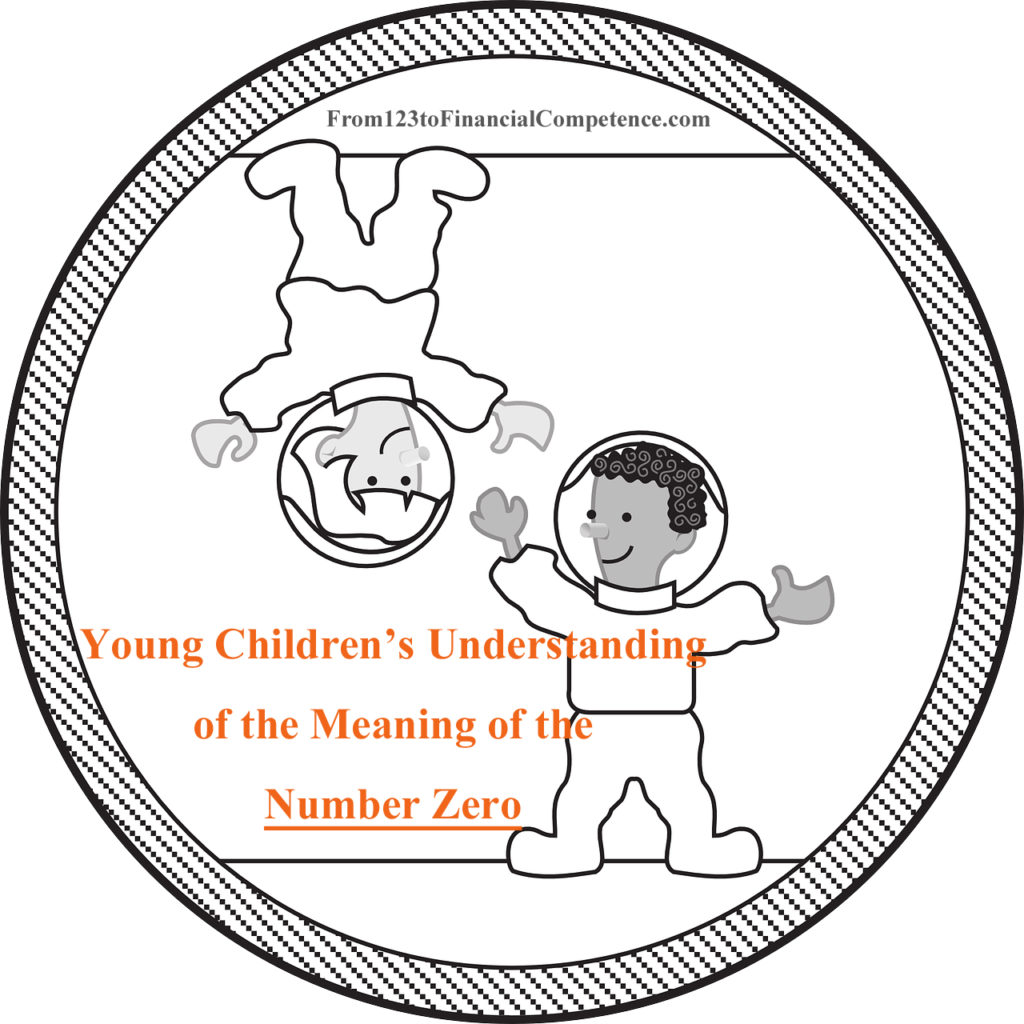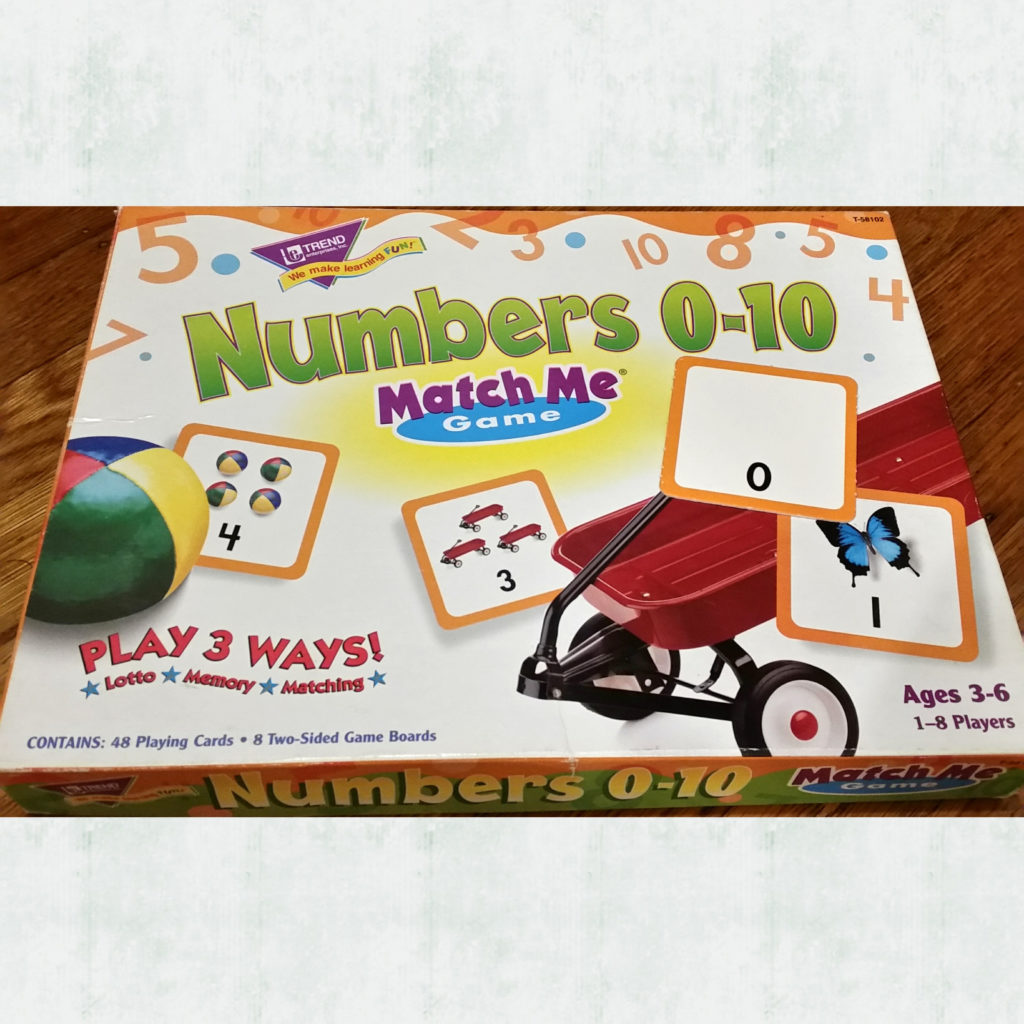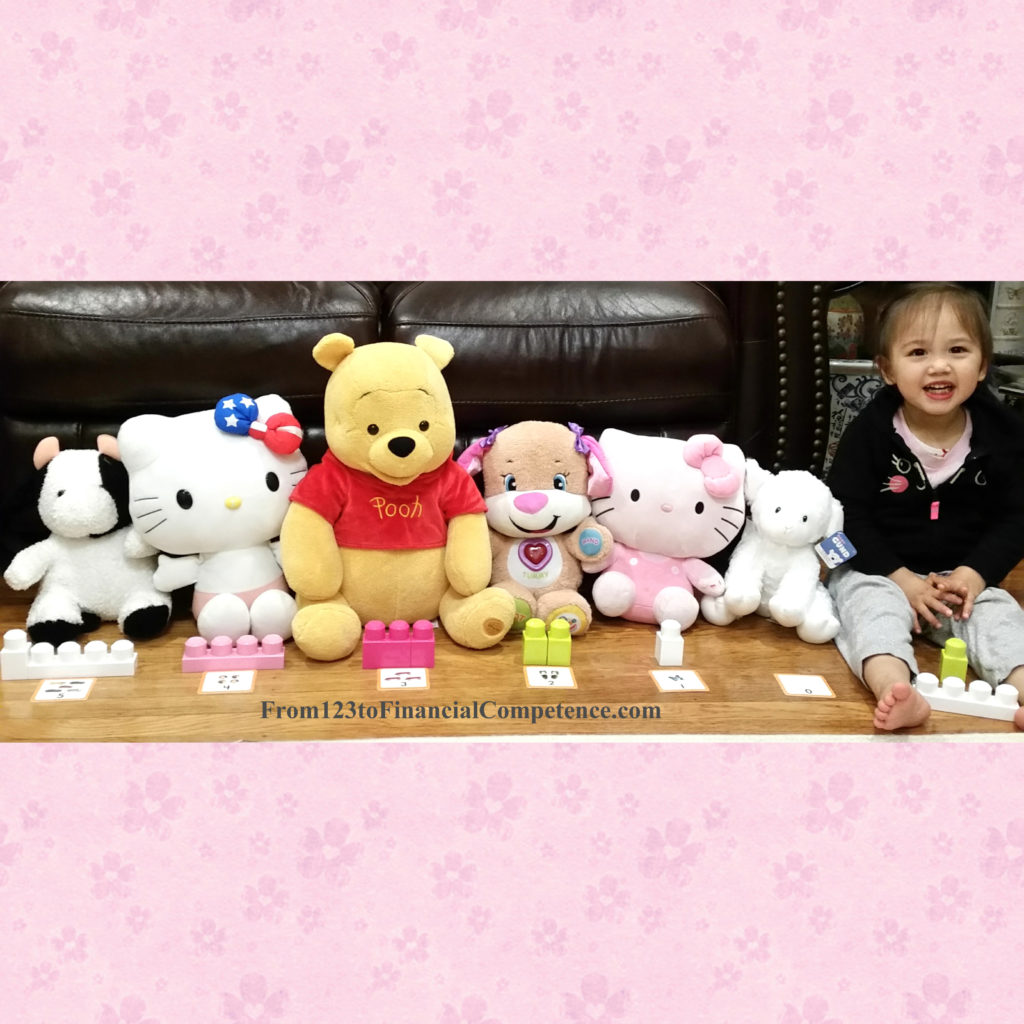The Counting Exercise You Do with Your Child
As you teach your child to count, do you frequently start the exercise with the number zero? I started modeling the counting procedure (such as touching an object with each count) to my daughter when she was about 18-months old. Yet, it never occurred to me to include the number zero in the exercise. This number is not countable. In retrospect, I wish I had started the count with ‘0’, and slowly training her to see the number ‘0’ as part of the number continuum.

The Importance of the Number Zero
On my daughter’s second birthday, she received a number learning kit. One set of items in this kit are number cards (0 to 10), each with a printed numeral and visual picture(s) corresponding to each numeral. Even though the kit’s recommended age range is 3 – 6, I’ve decided to explore the various activities with my 27-month-old daughter. This kit gave me the idea to introduce her the number zero.

Just as the foundation of higher levels of math learning is counting numbers, having a full understanding of the concept of the number zero is also very important when it comes to doing arithmetics and mathematical competence. What is 2 + 0? What is 1 – 0? What is 3 * 0? What is 6 / 0? What does the number ‘0’ in numeral 105 represent? What’s the difference between the numerals 105 and 1,005? What do the first three ‘0’s represent in numeral 0.0002?
As you might already aware, the number zero and its relations to other single digit positive integers (1 – 9) are very important concepts we need to be teaching our children. I want to as much as I can (and as early as possible) to facilitate my daughter’s understanding of the number ‘0’ and how she can incorporate the concept of zero into her learning of numbers and math and life skills.
The Challenges Children Might Face as They Learn the Concept of the Number Zero
Research suggested that some children might struggle to understand the concept of the number zero. First, learning numbers is challenging in general (I wrote about why this might be the case in previous articles here and here). Numbers are abstract symbols that are not bound to the physical and perceptual qualities of an object. There’s nothing in the visual cues of two chairs or two spoons that indicates the number ‘2’, yet, we continue to reinforce the number ‘2’ to our children as we teach them to count accurately.
Second, unlike all positive numbers that have a tangible visual form (concrete and countable), the number ‘0’ is not a counting number. In fact, ‘0’ represents none or nothing—the absence of quantity. As a result, teaching and reinforcing the concept of the number zero to young children is likely to present a new set of challenges for parents and educators.
My Daughter’s Current Math Skills
At 27-months old, Ruby has mastered rote counting from 1 to 20 in both English and Chinese, but she is still developing her number sense (the meaning of number words) and learning verbal count procedure. With assistance, she touches and counts each object just once. However, on her own, Ruby sometimes struggles separating the items she has already counted and those that are waiting to be counted, usually resulting in overcounting.
Furthermore, she doesn’t always begin the counting procedure with the number ‘1’. She might count to 9 when there were only 4 objects on a counting card. This was because she started the count procedure with the number 6. She probably heard me saying something about the number 6 right before I asked her to do count. In general, Ruby is still developing her cognitive abilities making sense of the meaning of number words, verbal count procedure and matching number symbols to their corresponding visual cues.
Although Ruby hasn’t learned to count positive (non-zero) numbers accurately on her own nor has she acquired the ability to relate number symbols to visual representations, I’ve decided to introduce her to the concept of zero. For a few months, she has mastered the vocabulary, “no more” and “nothing”. What if I start the teaching by helping her associate the concept and symbol of zero with those words?
The Scientist in Me
I’m probably been way over my head. Most educators would recommend to only begin teaching your child the concept of zero after your child has acquired a solid understanding of small positive numbers. One study suggested that around the age of 4, children begin to understand both the cardinal and ordinal properties of the number zero (I wrote about these principles in an older article here).
Being mindful of this, I’ve been paying very close attention monitoring my daughter’s verbal and nonverbal signals (I wrote about these cues in an older article on the blog). As such, I’m prepared to resume the teaching at a later time, when she might be more ready. At this point, I set out to do this experiment with Ruby really to satisfy my own inquiries about young children’s processes learning the number zero (what can I say, I’m a trained scientist). If somehow along the way I manage to teach her some things about the concept and symbol of zero, that would certainly be a bonus.
Developmental Progressions in Children’s Understanding of the Number Zero
Before I talk about the activities I attempted with my daughter, I want to share what I’ve learned about children’s developmental progressions learning the meaning of zero. My thought is that once I understand the processes, I would be able to cater my teaching accordingly. I would also be able to monitor the progress my daughter makes during each stage (and not have unrealistic expectations) and determine when to transition her to the next stage.
Surprisingly (and unfortunately), very limited research has been done to study how children develop their understanding of the number zero. One study was done in 1986 by Wellman and Miller. The two researchers suggested that children’s understanding of the symbol zero develops in a series of stages. First, children learn to identify the symbol of zero without understanding what the symbol means. Later, children learn that zero represents “none” or “nothing”, but they still fail to recognize that zero is a numerical value that occupies a place on the numerical continuum. For example, when asked, “which is smaller, zero or one?”, children will often insist that “one” is the smaller number. Finally, children learn the relationship between zero and the other numbers on the continuum, and understand that zero is smaller than one.
As you’re reading this, I’m confident my daughter recognizes the symbol of the number zero. She would pick out this particular card from the number learning kit and excitedly announces the numeral on that card was the number zero. Then, she proceeded to say “nothing/no more”. Sometimes, she even did this complemented with the hand gesture, “no more”. However, developmentally, she hasn’t been able to associate the number zero with the rest of the single digit positive integers yet (1 – 9) or understand that the number zero is part of the number continuum.
Two Exercises You Can Engage Your Toddler to Learn the Number Zero
Before starting a learning activity with your child, first model how you would go about completing the exercise (when time permits or when it’s feasible). Say the instructions aloud as you do the exercise. This is also a great time to reinforce some lessons that were taught in the past.
Activity #1
The goal of this exercise is two-folds: (1) to familiarize your child with the number ‘0’ and put this number in context with other small positive numbers, and (2) to have your child learn to match the number of object(s) with the corresponding numeral on the number card.

Instruction: Place six dolls on the floor/table/sofa. In front of each doll, place Lego pieces of 0, 1, 2, 3, 4 and 5 respectively. Then, have your child count the number of Lego piece(s) each doll has, starting with the doll that has ‘0’ Lego piece. Once you child correctly identifies the number of Lego piece(s), you place the number card with the corresponding numeral in front that doll. Repeat the steps for the remaining five dolls.
Activity #2
This exercise is a variation of Activity #1. Instead of placing the number card in front of each doll, substitute that with a piece of white paper and have your child draw circles/dots to represent the number of Lego piece(s) each doll has.
Once again, take the time to model the steps for your child. Don’t begin the exercise until you get the feel that your child understands what his/her responsibility is in the exercise.
During my research, I also found two fascinating reads on the number zero, if you’re interested:
A Philosophical Discussion of Zero
How old was your child when you introduced the number zero to him/her?
How did you approach teaching your child the number zero?


Comments are closed.